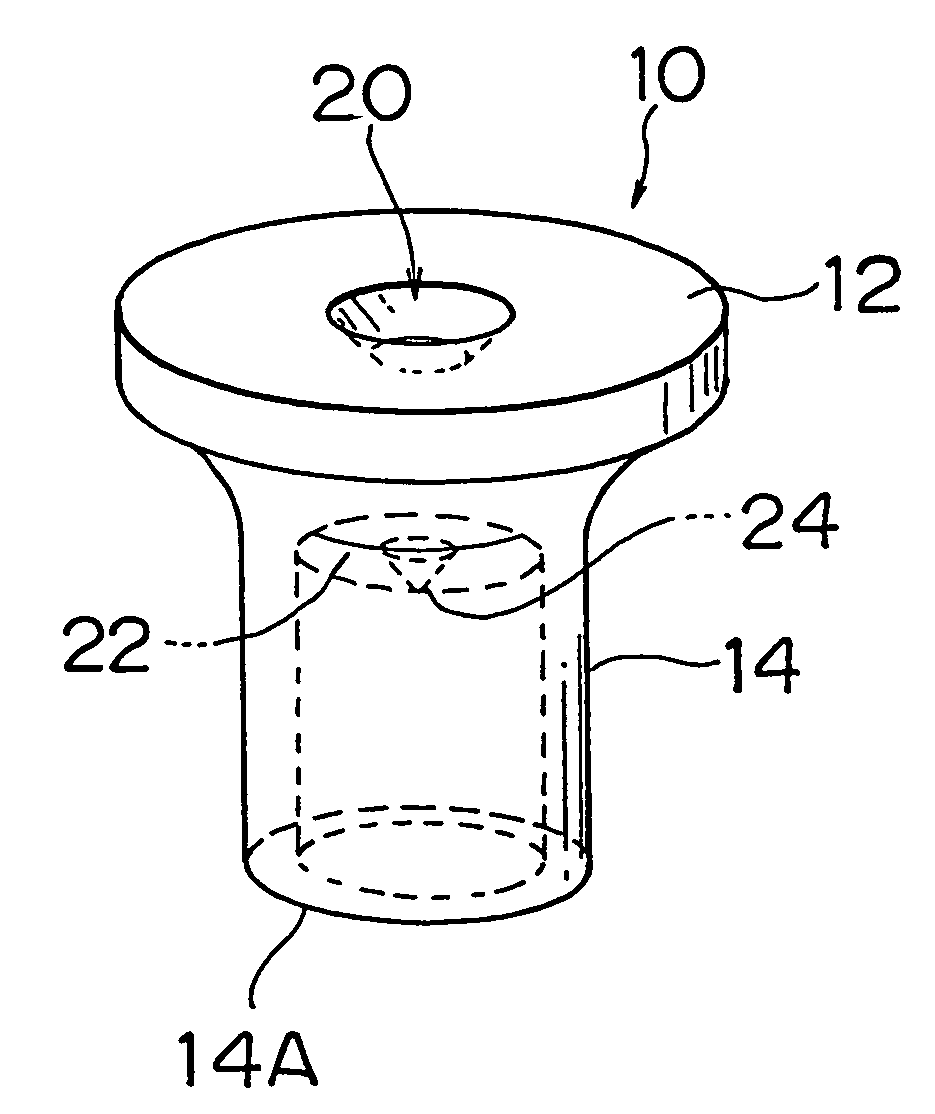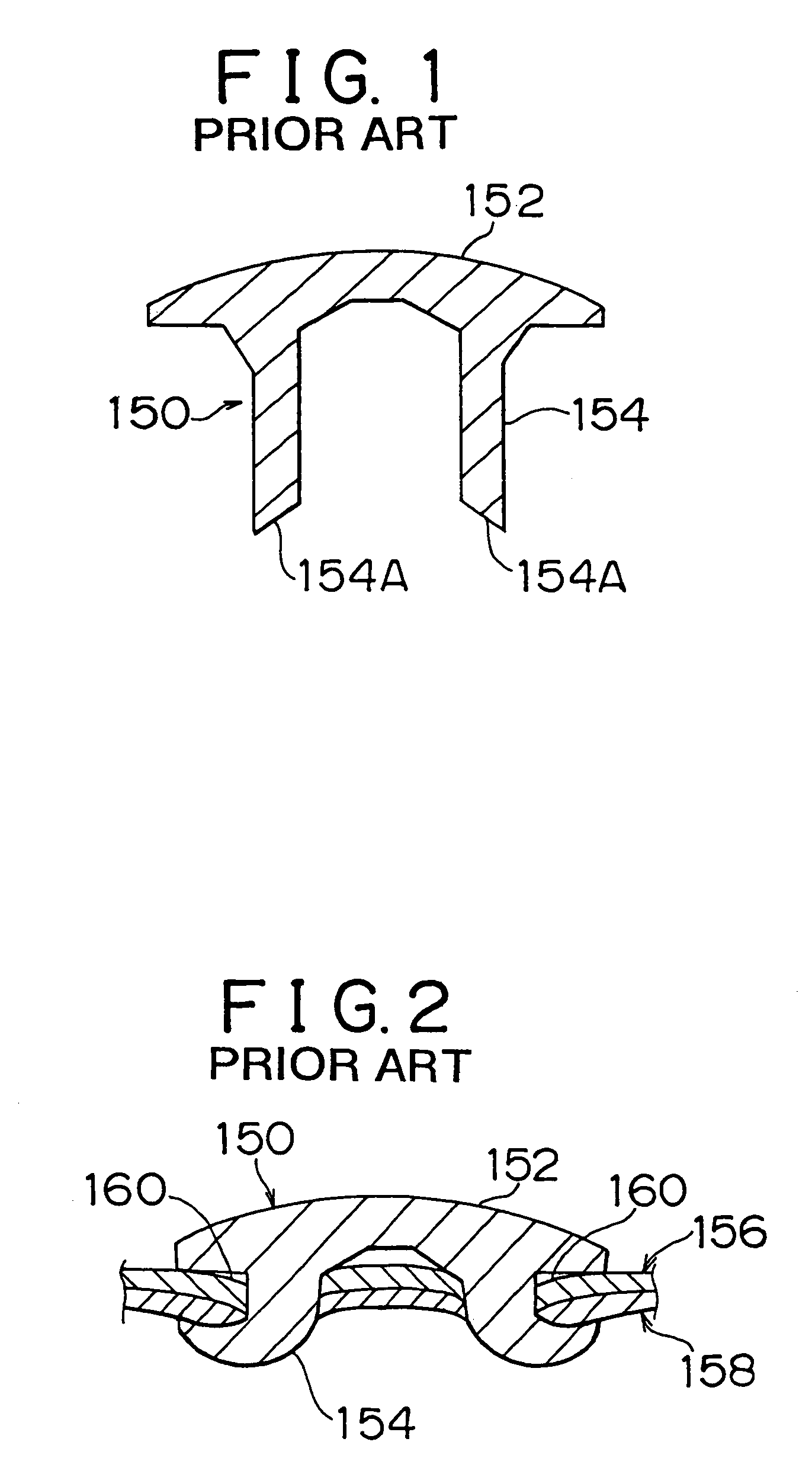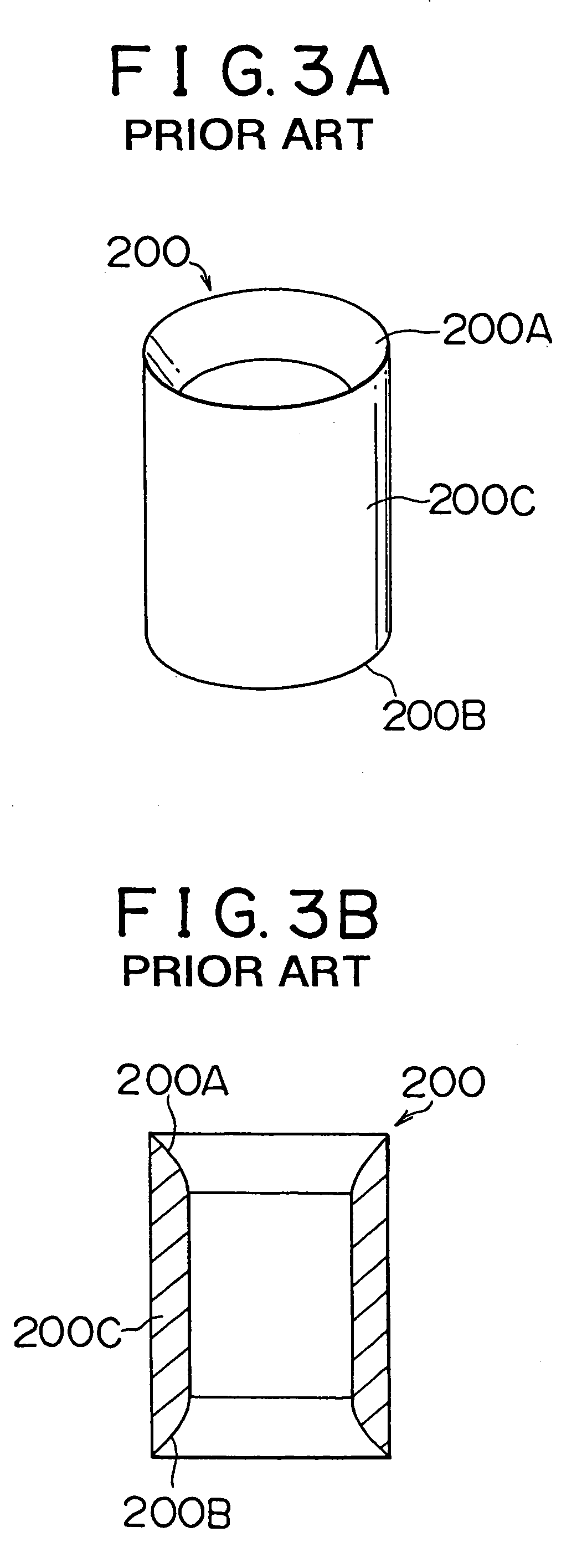Rivet, riveted joint structure riveting apparatus, and riveting method
- Summary
- Abstract
- Description
- Claims
- Application Information
AI Technical Summary
Benefits of technology
Problems solved by technology
Method used
Image
Examples
first embodiment
[0053]the first and second aspects of the present invention will be explained with reference to FIGS. 6A to 6C and 7.
[0054]As shown in FIG. 7, a rivet 10 of the present embodiment is a hollow rivet that consists of a head portion 12, and a cylindrical portion 14 extending from the back surface of the head 12. The head portion 12 of the rivet 10 is formed at its substantially central portion with a recess 20 having an inverted, truncated conical shape. Also, a projection 24 having a conical shape is formed on a bottom 22 A of the cylindrical portion 14 of the rivet 10.
[0055]A riveting or fastening method using the rivet of the present embodiment will be now explained. Initially, as shown in FIG. 6A, a distal end 14A of the cylindrical portion 14 of the rivet 10 is positioned on one (16) of two plates 16 and 18 to be fastened.
[0056]Next, as shown in FIG. 6B, the head portion 12 of the rivet 10 is pressed or driven by a first punch 32 so that a die 34 disposed on the side of the plate ...
PUM
| Property | Measurement | Unit |
|---|---|---|
| Length | aaaaa | aaaaa |
| Angle | aaaaa | aaaaa |
| Deformation enthalpy | aaaaa | aaaaa |
Abstract
Description
Claims
Application Information
 Login to View More
Login to View More - R&D
- Intellectual Property
- Life Sciences
- Materials
- Tech Scout
- Unparalleled Data Quality
- Higher Quality Content
- 60% Fewer Hallucinations
Browse by: Latest US Patents, China's latest patents, Technical Efficacy Thesaurus, Application Domain, Technology Topic, Popular Technical Reports.
© 2025 PatSnap. All rights reserved.Legal|Privacy policy|Modern Slavery Act Transparency Statement|Sitemap|About US| Contact US: help@patsnap.com



